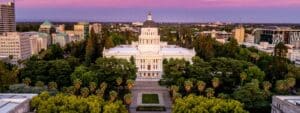One of this region’s most daunting challenges is to figure out how to accommodate the addition of an estimated 2 million residents by 2035. The discussion of such growth often turns to doom and gloom: more traffic, more pollution, a lower quality of life.
But a new analysis by Greenbelt Alliance, a group with a long history in the region’s wars over sprawl, contains a refreshingly upbeat view of the future.
The alliance, building on research of potentially developable sites by UC Berkeley, has come up with what could become a blueprint for planners to guide new housing. It suggests that the region of 7 million people could handle its expected population growth, if it is steered to the right places. The study-recommended sites include shuttered strip malls, vast swaths of parking and vacant lots.
“A lot of people call the Bay Area ‘built out’—we wanted to debunk that,” said Elizabeth Stampe, a spokeswoman for Greenbelt Alliance. “Has anyone called Paris built out? Cities exist for a long time and are built and rebuilt and change to meet the needs of new generations.”
The group identified seven “smart spots” along mass-transit corridors that could accommodate about four-fifths of the growth. The largest concentration of in-fill opportunities was in northeast Santa Clara County, which would handle 26 percent of the new growth, partly by redeveloping old office parks along San Jose’s North First Street and downtown.
Another major “smart growth” zone would be the inner East Bay, with its 13 BART stations and abundance of AC Transit bus routes.
While “smart growth” has been a mantra of regional leaders for many years, the reality has been that that new subdivisions continued to pop up on converted farmland on the eastern edges of the Bay Area, where land was cheap, political resistance was light—and the impact on roadways, water and air quality was most severe. Still, local governments and developers rationalized, car-oriented subdivisions with big lots and spacious homes were what consumers desired.
However, the unsustainability of the exurban dream has been thoroughly exposed in this downturn. As Stampe noted, an overlay of the map of areas with the highest foreclosure rates would show a direct correlation with these subdivisions built far from city centers.
The good news is that the analysis presents persuasive evidence that the Bay Area has room to grow while enhancing the region’s quality of life—if it’s managed wisely.
This article was originally published in the San Francisco Chronicle. Read the original article.




